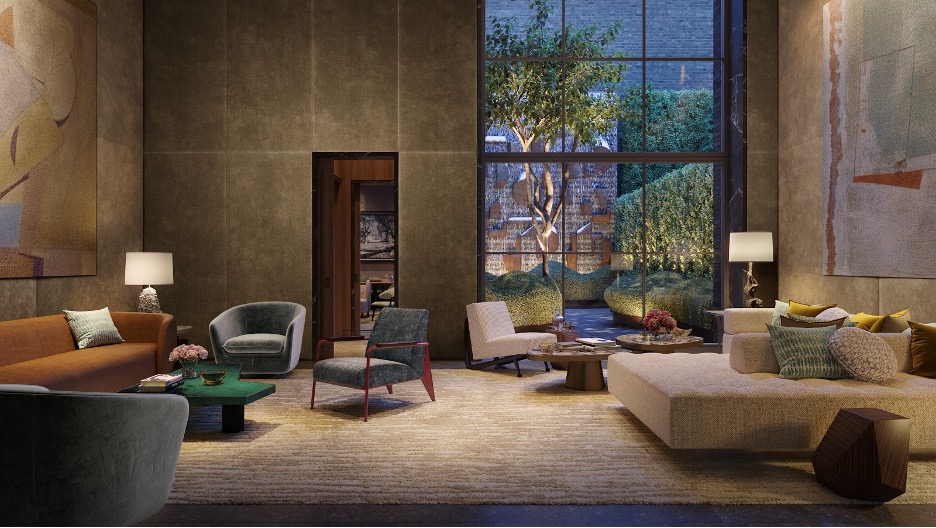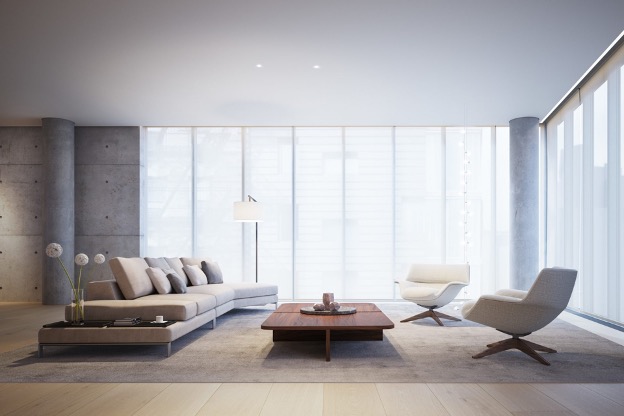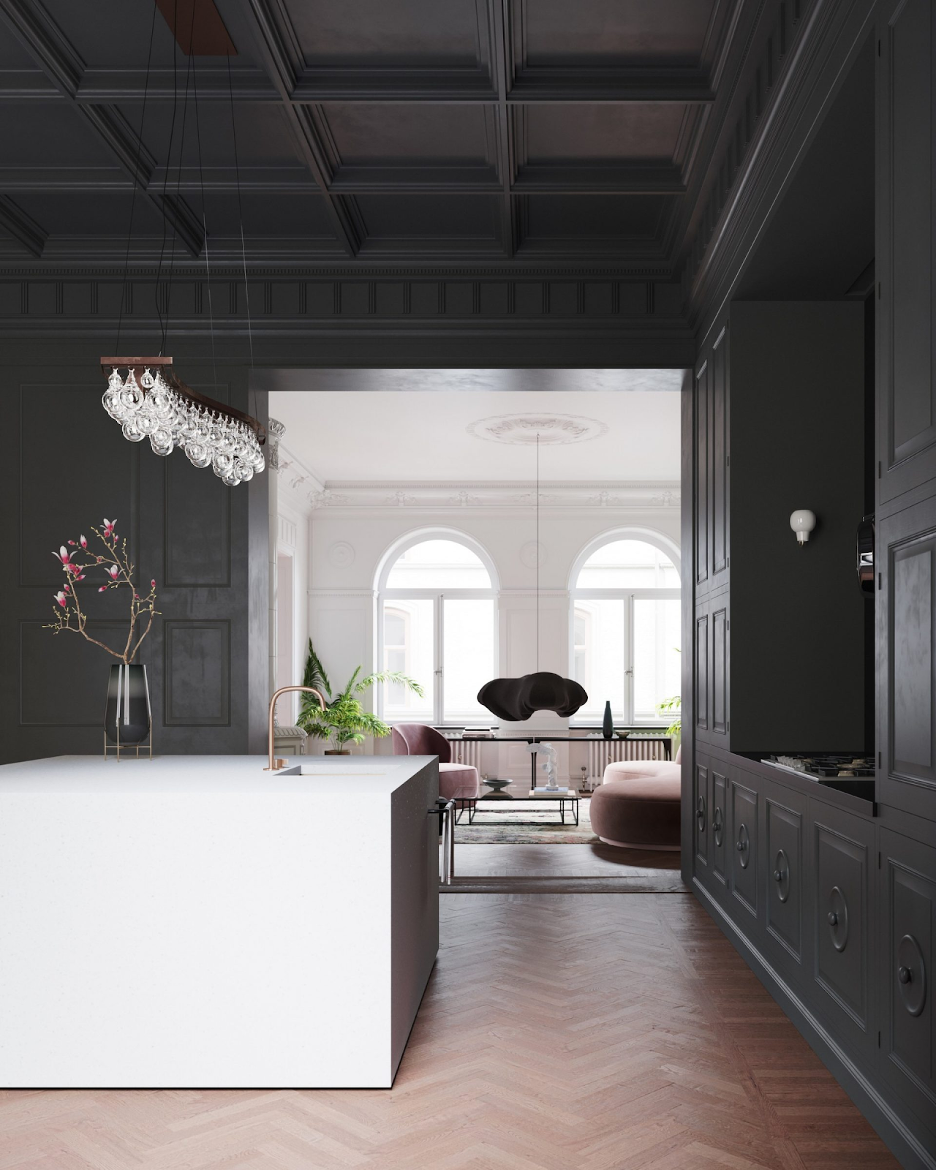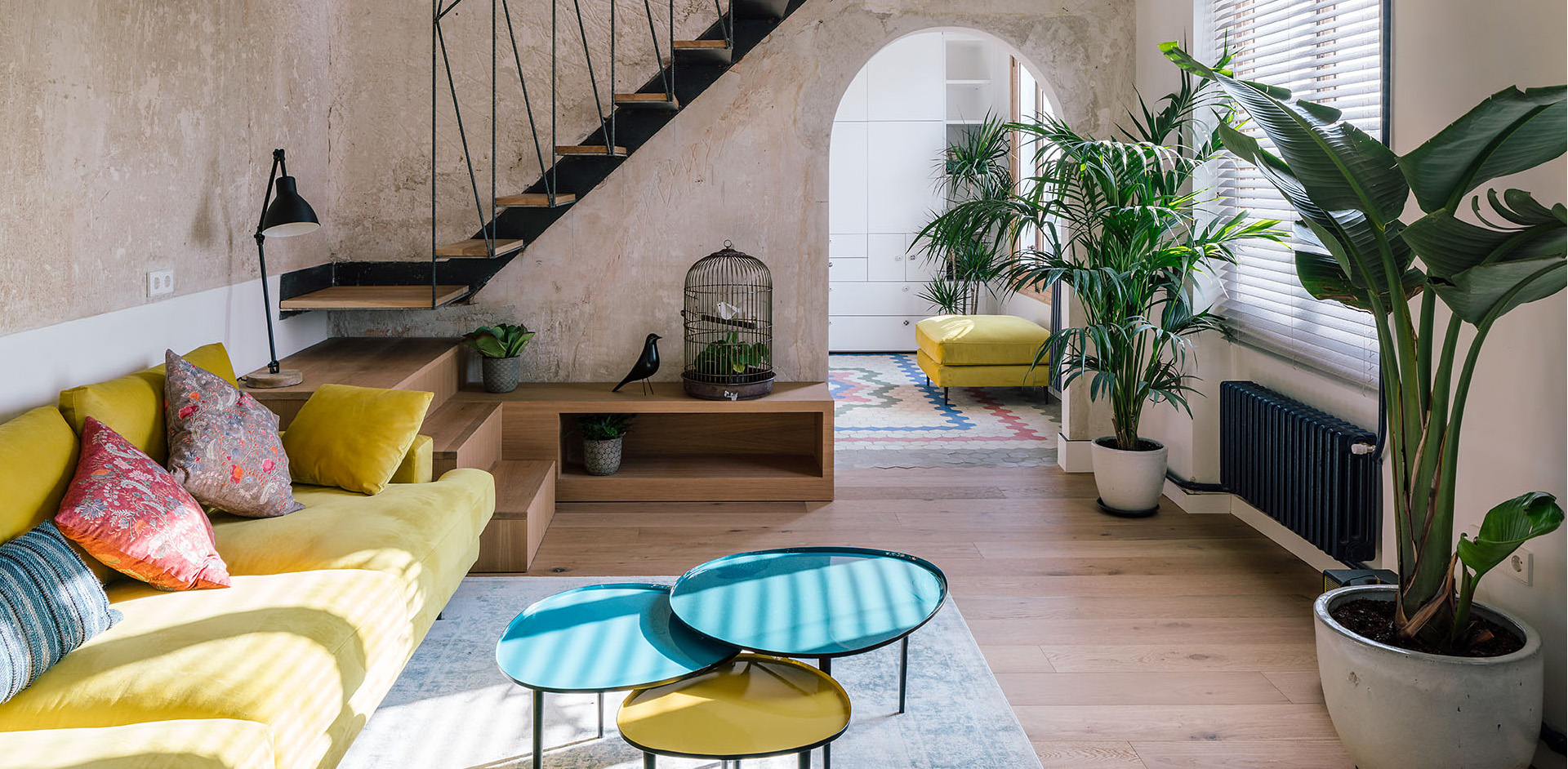James Falconer is an architect, visualization artist, and the Managing Director of The Boundary‘s US office, based out of New York City.
Our brains have an innate capability of discerning whether or not a representation of a human being is natural or created. The closer to “the real” we get, the more uncomfortable the viewer feels. Our empathy and affinity for an image dramatically drops as we move away from cartoons and drawn figurines and draw closer toward animatronic human-like puppets and detailed CGI people.
The “Uncanny Valley” effect, first identified by Masahiro Mori, offers fascinating insights into how our brains perceive created representations of reality; it suggests that human beings perceive that which presents itself as real with innate suspicion. Are we hardwired to be suspicious of photorealistic rendering in a similar way? Possibly — and probably with good reason. In the wrong hands, photorealism can do exactly what the human subconscious is likely wary of: creating a false reality and presenting it as the real deal.

Images that position themselves as “photorealistic” but bend the limits of reality create distrust. Rendering by MANICA Architecture / Greyscale Gorilla, image courtesy of the author.

The 2011 movie Tintin was widely criticized for being simultaneously too real and not real enough. Image courtesy of MUBI.
Consider facades that, in reality, stand in the shadow of neighboring buildings but, in an image, can be manipulated to appear as if they stand bathed in equatorial sunshine. In a similar manner, a space that feels a little pokey for the developers’ liking can be surreptitiously enlarged by pushing the walls back a few feet in a representation. Likewise, representations of buildings that appear too large to get public backing can be scaled down by a couple of stories.
These types of tricks — turbo-charged sunshine, teletubby landscapes, kids flying kites, or other aspects the utopian worlds that so many rendered buildings seem to inhabit — create distrust and disconnection in the viewing public. The developer may say that what they are presenting is real, but you, the viewer, recognize that it isn’t. By contrast, a representation that is drawn by hand, or more abstractly, will immediately incite a willing suspension of disbelief. In these cases, viewers know that they are being asked to imagine and fill in blanks, making them more comfortable because they know where they stand in relation to the representation.
All of the above is true, and I can’t refute it. So, why am I — a visualizer who makes his living creating photorealistic visualizations for real estate developers and architects — writing an article about the value of the industry by bashing it? I do so precisely because it is important that we acknowledge the feelings that many people have about the work that we do. At the same time, however, my aim is also to convince you that great visualization is a phenomenally powerful and potent art form that, when correctly leveraged, can elevate the work of architects and allow their visions to be seen and understood in a way that drawings and sketches simply cannot achieve.

109 East 79th Street by The Boundary for Noe & Associates, Steven Harris Architects and Legion
In the context of architectural visualization, photorealism is a catch-all phrase for images that seek to convey, with a degree of accuracy, the reality of the subject being presented via a computer-generated image (CGI). In the context of visualization, I struggle with this term; often, it is applied to work that could not, in any way, be described as “photorealistic.” Anything produced by a computer is seemingly bucketed alongside work that a studio may have spent decades honing. It’s maddening.
Photorealism is a term that is also used in the traditional art world for artists who specialize in paintings that convey their subjects in a hyper-realistic manner through incredible detail and technique that seems to defy the medium with which it is achieved. What if we applied the same critical logic to the art world? In theory, I could take a stab at creating an oil painting and then claim it to be photorealistic since that was my intention but, believe me, my attempts are unlikely to be compared with the works of Don Eddy or Audrey Flack.
Herein lies my gripe with the criticism so often aimed at photorealism: The issue that critics have is with bad visualization — and they’re right — but to denounce the entire field is to deny the fact that there is a great deal of absolutely breathtaking work done in this area now, and there has been for the past 20 to 25 years.

152 Elizabeth Street by The Boundary for Sumaida Khurana and Tadao Ando

The Waldorf Astoria by The Boundary for Noe & Associates
At The Boundary, “To evoke emotion through imagery” is literally the first line of our company handbook. It’s central to what we do. We challenge ourselves to achieve this while respecting the real world’s physical laws, despite working in a virtual world where anything is possible. We choose to work in this manner because it can be incredibly rewarding to achieve an image that faithfully represents the architect’s design intent. Most often, we also capture moments of magic: afternoon light catching the stonework, or the warmth of a welcoming interior on a cold day. We’ve also found that it is infinitely more rewarding for those who commission us to see these moments come to life, especially knowing that they are based in reality.
This approach may not be for everyone: It requires a level of faith and trust, not only faith in us as artists, but trust that the end viewers (the buyers more often than not) will react better to an image that they can sense is truthful and “real” rather than an image that has been manufactured to pull the wool over their eyes with smoke, mirrors, and impossibly blue skies. Above all else, the value of a thoughtfully produced visualization, like a great photograph, allows the building to tell its story — a beautiful piece of architecture should not have to rely on the stylistic choices or artist flourishes of an illustrator to convince the audience of its merits.

Stockholm Apartment by The Boundary for Tina Bergman Architect
Of course, there are times when the illustrator is challenged. Not every building is a masterpiece but great artists and studios find the moments worth celebrating, details that, when highlighted, can elevate an otherwise seemingly unremarkable project. It is in these moments that the real craft of architectural visualization is revealed, respecting the limitations of the physical reality in which the building exists while seeking out and conveying beauty where others might not see it.
Photorealism is not, as some have posited, an exercise in unartistic literal interpretation; instead, it’s an art of honesty. This is what the building will look like — there’s no lifting the pencil off the page when we get the ugly bits. It is, therefore, in my view, the bravest form of architectural illustration.
About James Falconer
James Falconer is an architect, visualization artist, and the Managing Director of The Boundary’s US office, based out of New York City. Founded in 2014, The Boundary has rapidly gained an international reputation for excellence in the visual representation of architecture and the built environment through their work with world-renowned architects across the globe.
Architects: Showcase your next project through Architizer and sign up for our inspirational newsletter.









